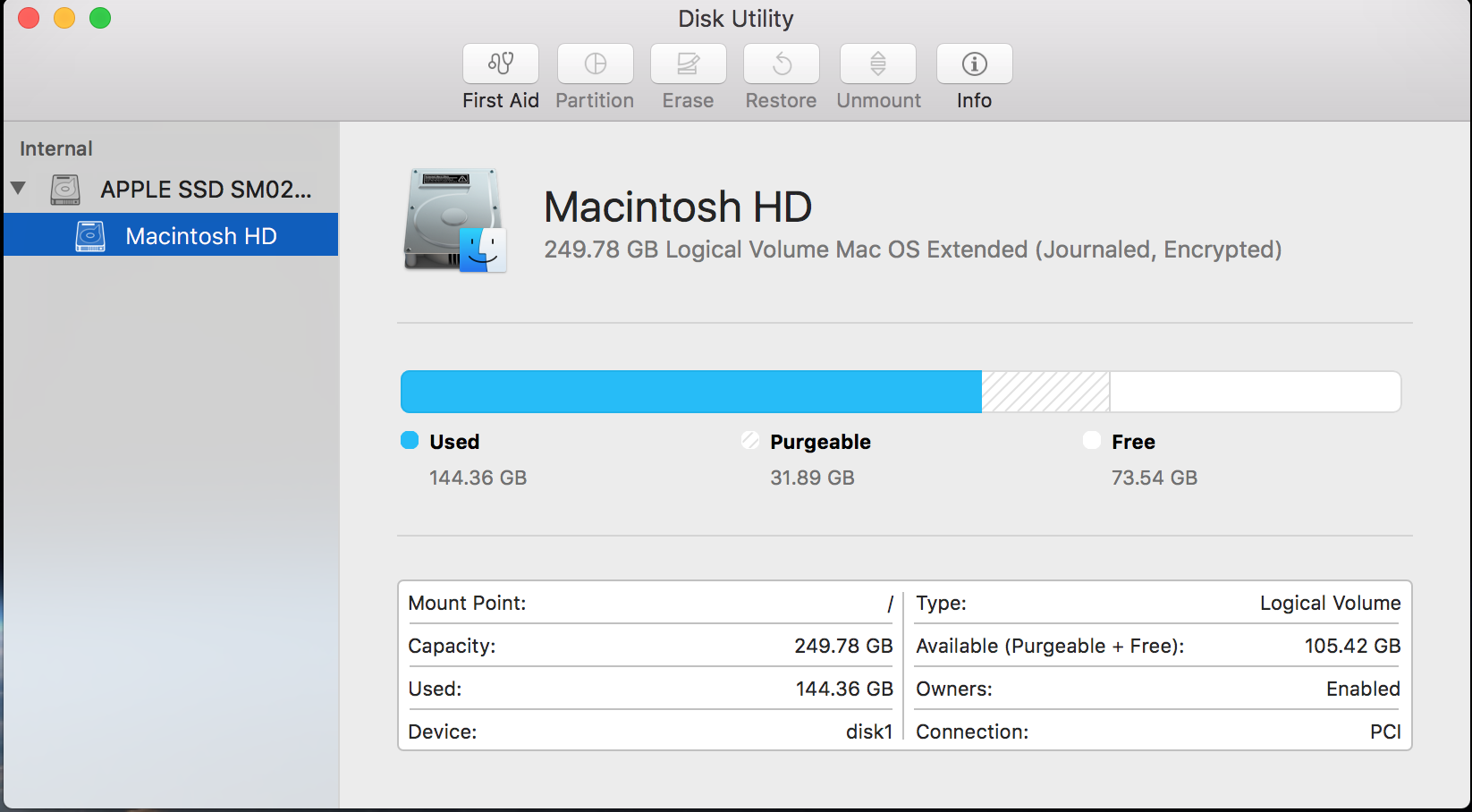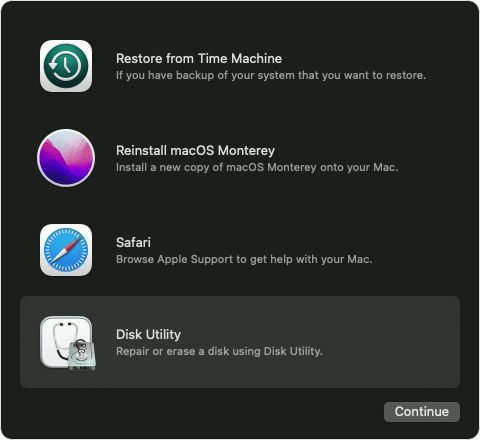
- #Disk utility mac os 2017 how to#
- #Disk utility mac os 2017 for mac#
- #Disk utility mac os 2017 install#
- #Disk utility mac os 2017 free#
👨💻 Separating your work life from your personal life: By having two operating systems, you can elegantly separate your work life from your personal life to avoid embarrassing issues with mixed-up email attachments and other similarly unpleasant problems.🧪 Testing: It’s always a good idea to test if a new version of macOS is compatible with all apps you rely on, and you can do just that by installing macOS on an external SSD or HDD.Here are some situations where this approach can be especially useful:
#Disk utility mac os 2017 install#
When you install macOS on an external hard drive, you can get your hands on the latest and greatest features without the risk of making your computer unusable.

At the same time, new versions of macOS always introduce attractive new features, and it’s understandable if you want to try them as soon as possible. It’s not uncommon for users to see their Macs become less stable than a hormonal teenager going through a caffeine crash. Seasoned Apple users know that when a new major version of macOS is released, things do always go smoothly. When It Makes Sense to Install macOS Monterey on an External Hard Drive If you discover that Monterey is too unstable, incompatible, or otherwise unsatisfactory, you can simply format the external hard drive and use it for other purposes, such as storing backups.
#Disk utility mac os 2017 how to#
Each volume within an APFS container can have its own APFS format-APFS, APFS (Encrypted), APFS (Case-sensitive), or APFS (Case-sensitive, Encrypted).By learning how to install macOS on an external hard drive, you can safely test everything macOS 12 Monterey has to offer while preserving your current installation intact. You can easily add or delete volumes in APFS containers. For example, folders named “Homework” and “HOMEWORK” are two different folders. For example, folders named “Homework” and “HOMEWORK” are two different folders.ĪPFS (Case-sensitive, Encrypted): Uses the APFS format, is case-sensitive to file and folder names, and encrypts the volume. Choose this option if you don’t need an encrypted or case-sensitive format.ĪPFS (Encrypted): Uses the APFS format and encrypts the volume.ĪPFS (Case-sensitive): Uses the APFS format and is case-sensitive to file and folder names.
#Disk utility mac os 2017 for mac#
Each volume uses only part of the overall container, so the available space is the total size of the container, minus the size of all the volumes in the container.Ĭhoose one of the following APFS formats for Mac computers using macOS 10.13 or later.ĪPFS: Uses the APFS format.

If desired, you can specify reserve and quota sizes for each volume.

#Disk utility mac os 2017 free#
When a single APFS container has multiple volumes, the container’s free space is shared and is automatically allocated to any of the individual volumes as needed. macOS 10.13 or later supports APFS for both bootable and data volumes.ĪPFS allocates disk space within a container (partition) on demand. While APFS is optimized for the Flash/SSD storage used in recent Mac computers, it can also be used with older systems with traditional hard disk drives (HDD) and external, direct-attached storage.

Apple File System (APFS), the default file system for Mac computers using macOS 10.13 or later, features strong encryption, space sharing, snapshots, fast directory sizing, and improved file system fundamentals.


 0 kommentar(er)
0 kommentar(er)
